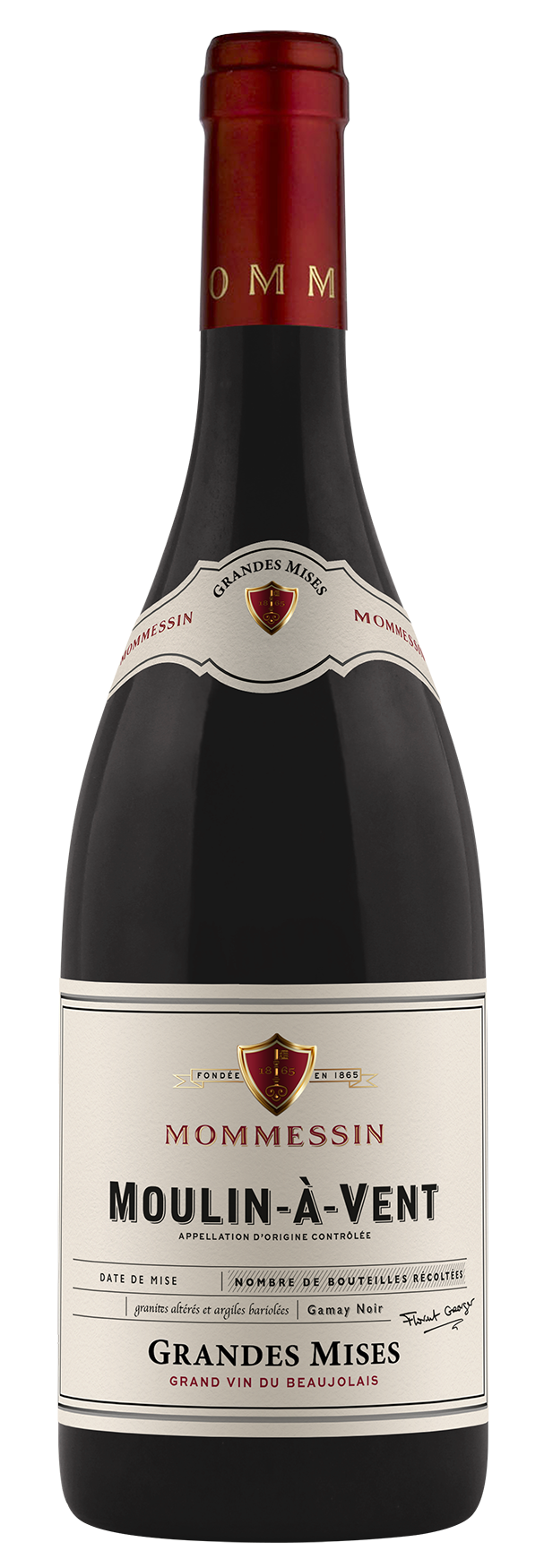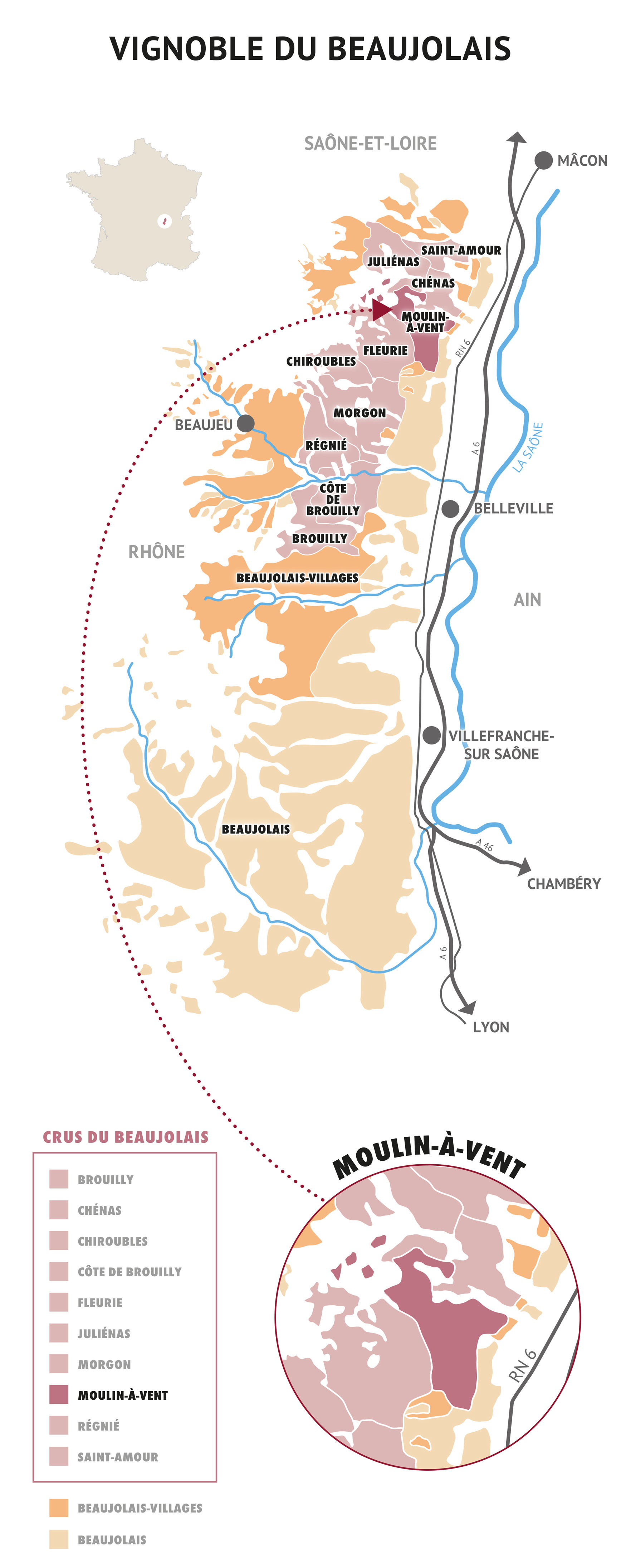Grape varietal
Gamay Noir with with juice.
Tasting notes
Decanting will help to reveal the mineral and floral notes of this wine, but also the aromas of black fruits, fudge and spices.
With its ruby red colour and silky tannins, this wine shows a supple, tender structure and a nice length in the mouth.
Serving suggestions
Best decanted and served at a temperature of 14° to 16°C. (57-60°F.) to discover the aromatic intensity of this wine.
Food and wine pairing
It is perfect with red meats, grilled, roasted or even marinated and strong cheeses.
Ageing potential
This wine can be kept for more than 5 years.
Origins
The appellation gets its name from the presence of an old windmill situated in the middle of the vineyard, which was used to mill grain until the mid 19th Century. The Moulin-A-Vent appellation stretches over the communes of Romaneche-Thorins and Chenas.
Terroir
The soil of Moulin-A-Vent is fairly shallow, permeable and rich in mineral elements especially manganese. Composed of pink-coloured brittle granite.
Vine and soil
From a rigorous selection of a single domaine sourcing. The vineyard benefits from all exposures except the North.
Age of vines: 50 years
Yield: 52 hectolitres / hectare
The vines are pruned “en gobelet” with sustainable farming methods.
The shallow, pink-brown soil is sandy and not very clayey, but clearly acidic, on variegated clays beyond 105 cm, then pebbles, then weathered granite.
Vinification and maturing
Hand harvested, the grapes were 100% de-stemmed but not crushed, and then placed in vat by gravity. The fermentation maceration lasted 25 days with cap-punching, over-pumping and racking before pressing at the end of October.
The wine was then placed into 3 to 5 years old oak barrels for a 10 months ageing period on its fine lees.
Vintage : 2022
Rainfall in June was highly variable from one area to another. In the south of Beaujolais, where most of the Chardonnays are concentrated, there was little rain, unlike the north, where the crus are located.
The intense heat of July and August accelerated the ripening process for the Gamay grapes. The harvest was characterised by great disparity between the plots. Some grapes did not withstand these extreme conditions and lost a lot of juice, while others resisted them exceptionally well. Several factors explain these divisions such as the heavily drained soil, the exposure, and the age and yield on the vine. There was little difference between the early and late sectors.
The harvest took place from 23 August to 10 September.
Volumes were lower throughout the appellation, but the quality was good.
This year we have focused on de-stemming with long macerations to enhance the wine's elegance. Naturally, our traditional semi-carbonated vinification with whole grapes is still used to extract the aromatic finesse of the Gamay grapes, as well as some hot pre-fermentative maceration to extract as much colour as possible from the grapes that suffered the most from the drought.
The wines are beautifully concentrated with a lovely volume in the mouth. Tannins are prominent. Tasting is a real pleasure. The nose and palate reveal raspberry and cherry liqueur aromas, smooth blueberry cream accompanied by violets, dark chocolate and pear.
Awards
- February 2024 : Silver Medal - CONCOURS INTERNATIONAL DU GAMAY 2024
- May 2024 : Bronze Medal - INTERNATIONAL WINE CHALLENGE




